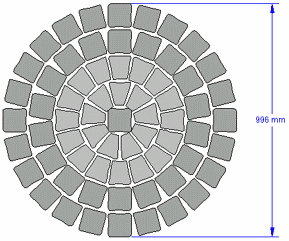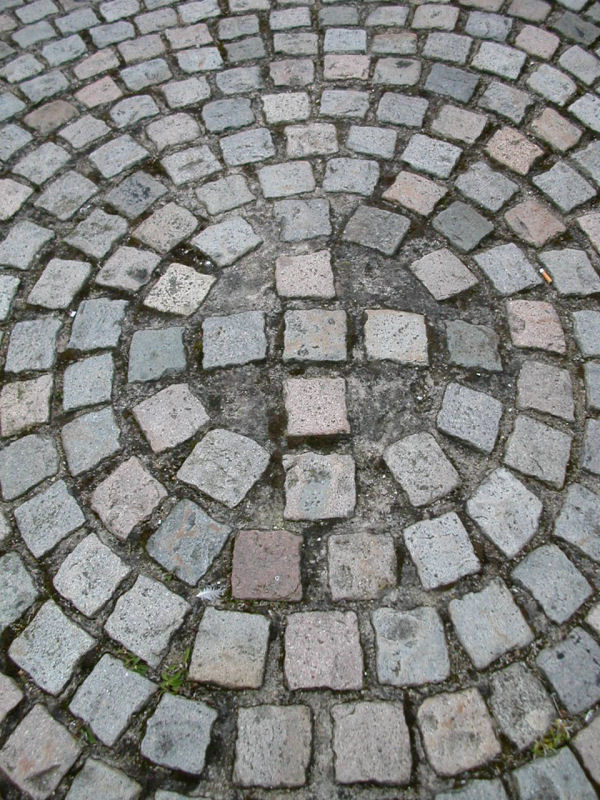Page 1 of 1
Posted: Tue Jan 14, 2020 8:03 pm
by jaysettpav
Hello. How do you do. Many thanks for the excellent website. Could someone please help me with jointing width and suitable material to put in? I have followed the advice using the website and I am almost ready to lay the setts. Delivery on Friday. A slight concern has arisen.
I calculated with 10mm jointing and have ordered 20sqm to cover 24sqm. I have opted for flexible setts (sawn sides 100mm depth). Was reading in the British Standards I think and they say I should retexture the sides to increase friction. I am obviously not going to be able to do this so started to worry about the jointing width of 10mm. Back to your useful website and found that sawn setts normally 2 to 5mm jointing with kiln dried sand. Also found for larger widths, "splitt" is suitable.
What should I do? Carry on with the planned 10mm width and get myself splitt (not sure where to buy this stuff, is ther another name)? I was also considering sharp sand in the jointing because of the interlocking ability. I am hoping that someone can tell me that sharp sand is great for jointing at 10mm widths. Another reason for going with a wider jointing is so that I can easily compactify it whereas smaller joints may require the vibrating plate which I am avoiding.
Or should I reduce the width and order more setts?
I have chosen to have a semicircular pattern (using cubes) for my driveway starting from below the gate and gradually changing to staggered courses using 200mm setts and the remaining cubes. I am aware that this transition will force me to widen the jointing width at the sides compared to the middle. Estimating increase to 14 to 17mm. Can someone see any problems with this plan?
Posted: Wed Jan 15, 2020 10:19 am
by Tony McC
You would struggle having a flexible construction with 10mm wide joints - it's too much. The typical width of joints for flexible construction is 2-6mm.
The jointing medium has to generate friction between adjacent setts, and at 10mm width, that's just too wide for a jointing aggregate to be effective.
If you can source a 6mm splitt, then joints at the wider end of the 2-6mm spectrum would be fine, but if you plan to use a sand, then you need to have the joints at 2-4mm, really.
Circular patterns need accurate taper cutting of the setts to be truly effective.

Relying on gaping joints, as you propose, is more than a bit naff and really needs a bound/rigid jointing medium (a mortar or pitch) if the setts are to remain in place. At 14-17mm joints widths, unbound/flexible construction, it's only a matter of time before setts work loose.

If you must use a circular layout, consider using a centrestone and lay rings of setts around that at >600mm dia - it looks so much better.
Posted: Wed Jan 15, 2020 11:29 am
by jaysettpav
Thank you very much for your advice. I prefer the loose jointing method so I will have to order more setts to fill the driveway with a narrower jointing width. Can you tell me if sharp sand can be used as the jointing sand? I realise that it does not flow like kiln dried sand so I imagine it will be difficult to fill the joints but what if I push it in with some thin sheet of wood?
I am aware of the gaping gaps that will arise in the semicircle where the flat bit (as opposed to the curved circular arc) is just under the gate. I was thinking of filling this space with perhaps decorative pebbles? There are two drop bolts that come down so it will be awkward to fill this bit with a tight jointing. This is I suppose a reason to pursue another pattern?
I read on your site (many thanks again for it has inspired me and guided me to do things) that Bogens or circular patterns are more structurally sound than the staggered (is it stretcher) courses. So that is why I thought at least near the gate, I will lay in a circular pattern. I mentioned in the previous post that I will transition from the circular to the stretcher but taking into account your warning of jointing width, if I go with the circular pattern, I will have to continue with it until the bottom of the driveway (from the gate, it is about just over 4 metres and tapers to 2.4 metres at the end of the driveway. It is also not right angles to the gate because a summer house is in the way and so is around 45 degrees. It is 8.4 metres long).
I would also like to ask whether I should go for the circular pattern all the way to the bottom of the driveway or should I stick with all stretcher courses? I will be receiving 960 sawn cubes and 520 200mm setts.
Posted: Sat Jan 18, 2020 10:57 am
by Tony McC
In theory, you could use sharp sand as a jointing medium, but the critical point for loose/unbound jointing with setts is that the joint width has to be kept relatively tight, and with sharp sand, I would say no more than 5mm.
Bearing that in mind, the use of a circular layout means that you would need to taper trim more or less every sett to ensure that 5mm max. It's a huge amount of work!
I can't help thinking this is a job crying out for bound construction.
Posted: Sat Jan 18, 2020 5:15 pm
by jaysettpav
Thank you for your advice. Did you get my photo I sent to your email brewcabin@? It shows the shape of the driveway. I think that the circular pattern would suit it best. What do you think?
I have sourced a 900mm diameter semicircle which I plan to place in the middle of the double swing gate. I have yet to buy it so there is still the possibility of changing to another pattern. Your advice is giving me a lot of pause for thought.
I have looked at your bound joints. but they look more difficult and not as attractive because it is not as easily correct things.
So I read your sealants and joint stabilisation pages. It seems you are not all that positive about these things. One thing caught my eye when you mention it is suitable for joints of width more than 1cm. Would Resiblock WJC be suitable?
Would splitt be suitable for the wider jointing? I have tried to find where I can get this but not much comes up. Is there another name for this material? Where can I buy it?
Posted: Mon Jan 20, 2020 12:00 pm
by Tony McC
As I've stated in response to your other threads, I don't believe unbound jointing is right for this project.
Posted: Tue Jan 21, 2020 8:02 am
by lutonlagerlout
I agree with the gaffer
this construction needs to be bound
cavaet emptor!
LLL

